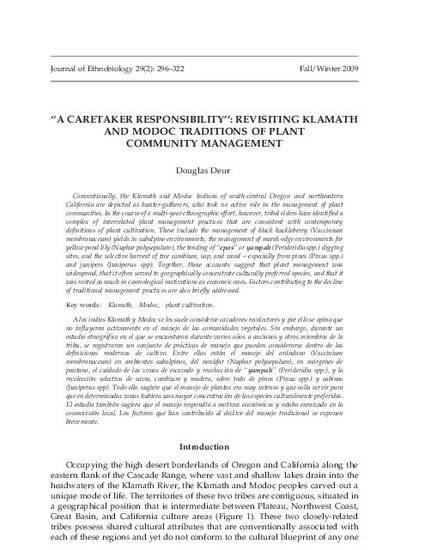
- Cultivated plants,
- Klamath Indians -- Ethnobotany,
- Modoc Indians -- Ethnobotony
Conventionally, the Klamath and Modoc Indians of south-central Oregon and northeastern California are depicted as hunter-gatherers, who took no active role in the management of plant communities. In the course of a multi-year ethnographic effort, however, tribal elders have identified a complex of interrelated plant management practices that are consistent with contemporary definitions of plant cultivation. These include the management of black huckleberry (Vaccinium membranaceum) yields in subalpine environments, the management of marsh-edge environments for yellow pond lily (Nuphar polysepalum), the tending of ‘‘epos’’ or yampah (Perideridia spp.) digging sites, and the selective harvest of tree cambium, sap, and wood – especially from pines (Pinus spp.) and junipers (Juniperus spp). Together, these accounts suggest that plant management was widespread, that it often served to geographically concentrate culturally preferred species, and that it was rooted as much in cosmological motivations as economic ones. Factors contributing to the decline of traditional management practices are also briefly addressed.

Copyright 2009 Society of Ethnobiology. Archived with author and publisher permission.